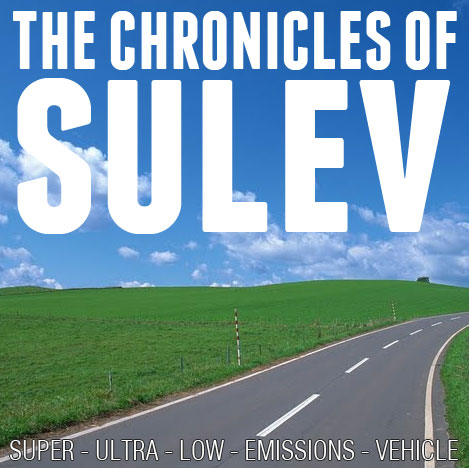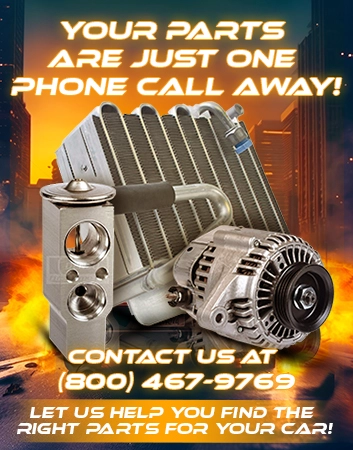Ecology has had a massive impact on automotive engineering over the years. We’ve reached a point where our need for safe transportation came head to head with the ecological consequences of having millions of ICE vehicles milling around the globe. Different countries and states started implementing different rules to address the issue.
California enacted the somewhat notorious Super Ultra Low Emissions Vehicle standards, which were later adopted in part by the federal government. BMW SULEV technology is arguably one of the most interesting results of these regulations. It was effective, but at what cost? Let’s find out.
What Exactly Is SULEV Technology?
Eco-friendly cars and strict emissions standards are something people generally associate with Europe. As it turns out, California is the promised land for those who think cars should emit cleaner fumes. The whole SULEV or Super Ultra Low Emissions Vehicle standard started in Cali to keep metro areas free from harmful particles.
This comes as no surprise considering the traffic density of Los Angeles, San Francisco, and other highly populated cities in this state. However, the whole SULEV situation had thrown a wrench into the cogs of the automotive industry when it first appeared. This standard quickly became the norm back in the early 2000s, forcing car manufacturers to adhere to new rules if they want to sell cars in California or simply pound sand.
Designing a 90% “cleaner” vehicle than the existing LEV (Low Emissions Vehicle) was a challenge for everyone, including BMW. The giant from Bavaria wasted no time. They have quickly redesigned a part of its lineup to meet the new demands, starting with the 2003 BMW E46 3-series.
BMW’s Take on SULEV Vehicles
BMW was one of the many car manufacturers that immediately jumped on the SULEV issue, looking for a quick fix solution. The company wasn’t about to design a whole new engine just to meet the ever so strict emissions standards, so they decided to modify their existing lineup instead.
The first engine to be revamped is the legendary M54. This inline-6 powerhouse was the go-to option for a full range of BMW’s lineup at the time. It was the obvious choice for a SULEV conversion.
The M56 SULEV
The newly redesigned motor was labeled M56 and installed in cars sold in states where SULEV was the norm. However, as time went by, the M56 started showing sure signs of weakness.
It was more complicated than the M54 due to the increased emission standards requirements, but the M56 suffered from many of the same issues as the M54. The only difference is, those issues were more expensive to fix on the SULEV versions.
A great example of this would be the valve cover. To meet the SULEV norms, BMW went ahead and swapped the composite valve cover for an aluminum one. The M54 has a known issue where it twists the valve cover, causing oil leaks. The aluminum one doesn’t leak because it was, well, made of aluminum.
But, the crankcase ventilation valve that comes built into the cover was its own weak point. Here’s the kicker — BMW wouldn’t let you replace only the broken valve. Despite assigning a part number for this component, you can’t order it. Instead, you have to get a whole new valve cover.
Another thing that changed was the fuel rail as well as the injectors. BMW used a whole different setup on the M56, which means that your going after relatively rare parts (read more expensive), should any of the injectors start to give you trouble.
Overall, if you’re going to buy a 325i or 330i E46 3-series, make sure that the car you’re getting isn’t a SULEV version. Even though BMW only sold these in California, Massachusetts, New York, and Vermont, you’ll sometimes find SULEV versions in other states as their owners migrated.
What Makes a BMW Car SULEV?
Although the M56 was the first of its kind, it wasn’t the last. BMW’s SULEV range evolved over time. The engine itself is just a part of a much larger puzzle. There are many more components that had to be redesigned to boost emission performance.
The Fuel System
The fuel system overhaul on SULEV cars is probably the main culprit behind the less than stellar reputation of BMW’s early SULEV vehicles. If we go back to the infamous M56 E46 3-series, we’ll find a completely closed fuel system that features an integrated fuel pump as well as an integrated “long life” fuel filter — both located inside a closed fuel tank.
In other words, you can’t access any of these components. Instead, if your fuel pump failed, you had to get a whole new gas tank, which was an $8,000 job at the dealership. Compare that to a simple fuel pump replacement job on a standard E46 3-series, and you’ll understand why M56 fitted cars are disliked, to say the least. Also, as these cars are nearing the 3rd decade of their existence, those so-called long-life filters are mostly clogged up by now.
Fortunately for everyone, BMW saw the error of their ways and made some much-needed changes to the E90 that came after the E46 3-series. Although upgraded and beefed up, the fuel system on E90 and later models are much easier to service.
Intake System
Next, we have the intake system with an upgraded air box. BMW’s SULEV vehicles come with an additional carbon lined filter whose job is to keep the excess hydrocarbon buildup from finding its way into the atmosphere. The PCV system is also different on these cars and features a few more components and complications.
Exhaust
The exhaust on SULEV cars is a whole different beast compared to the regular versions. BMW went ahead and installed a catalytic converter at the very end of the exhaust manifold. They’ve also fitted certain cars, such as the E46 3-series, with dual downstream cats and upstream oxygen sensors.
Cats on these cars also require a warmup before they can reach their maximum efficiency. They are built to burn the highest amount of residual particles when the entire system has reached the optimal operating temperature.
Engine Cooling
When it comes to the cooling system, BMW SULEV cars use a few special components. For one, the radiators are different.
They feature a special manganese oxide coating and come complete with an integrated sensor built into the radiator’s core. Needless to say, you can only use this special radiator if you need to replace yours. Using a standard radiator will result in your car throwing codes.
The Benefit of SULEV Cars
So far, we went pretty hard on the whole Super Ultra Low Emissions Vehicle concept. Sure, one of these can turn into an endless pit of despair when things go sideways, but there are also a few benefits to these cars.
The entire world is in the middle of experiencing a paradigm shift when it comes to technological progress. Any future technological development will need to have an ecological component. By operating a SULEV vehicle, you are becoming a part of the solution.
Even though this might not sound like much from your perspective, that little dent your car is putting into the whole global warming issue matters. It’s a snowflake in a growing snowball that is slowly but surely gaining inertia.
How to Tell If Your BMW is a SULEV Model?
Recognizing whether your car is SULEV or not is easier now than it used to be with the first E46 3-series models. With those, all you need to do is pop the hood and take a quick look at the valve cover. If it’s aluminum, your car is a SULEV.
With more modern models such as the E90, F30/31 3-series, and others, there are fewer visual indicators. The absolute best way to check is to look for the emissions tag in the engine bay. Depending on what car you drive, that tag will literally state it’s a SULEV vehicle, or it will list the engine designation. If you know which engine is in your car, you can view the super ultra-low emission vehicle engines online and see whether yours is on there.
The Verdict
Buying a used BMW is a process that usually requires a lot of homework unless you want to end up with a problem that may not be fixed even if you start throwing parts and money at it. It’s no secret that these cars are on the expensive side as far as maintenance goes. If you live in California or any of the states that impose the SULEV standards for emissions, your only option is to accept that your maintenance will be more expensive.
But, if you live outside these states and have the option to buy a non-SULEV BMW, do so. You’ll save yourself a lot of money and headaches on repairs.
Where to Find Quality BMW SULEV Parts?
Here at eEuroparts.com, we care for all BMWs, including SULEV ones. To find Genuine and OEM parts for your exact vehicle, meaning your specific SULEV version of common BMW models, head over to our online store. Make sure to input your car’s data as accurately as you can into our navigation tool.
Once you do that, our system will drop a list of parts that match your car. If you have any questions or if you’re not sure whether a specific part will, in fact, fit your vehicle, don’t hesitate to get in touch with us. We’ll help you find the right car part and get your beemer back on the road.








I would like appreciate knowing if anyone has information on whether the N51 cylinder head requred redesign, as did the head for the N52 engine. BMW reported that new cylinder heads were used by the end of November 2008 — apparently to deal with the hydraulic ticking issue (insufficient oil delivery through passages?}. Are N51’s plagued with the same issue?
Thank,
Mike
In my little opinion, most bmw engines have this issue. Used bmws with ticking across the board from n52s , n54s, even m54s. 2019 now so n54s and others seeing it. Bmw will say its a normal sound from an inline 6. Hah such bs. I wouldn’t say bmw engines are plagued tho .. they just require a particular type of care/maintenance..esp after 50k miles, which doesn’t seem to happen as often as it should. Lifter tick in a used Bimmer tells you maybe it didn’t have the greatest care. I see lifter ticking as almost normal but it is telling you there’s a problem! No immediate worries .. Needs attention before it exacerbates tho. Causes like a progressive issue .. loss of oil pressure (lost boost in turbos) esp after the engine is warmed…leading to higher likelihood of cam(s) and or ledges issues.. causing eventual knock/CEL & limp and prom other things on the way like injectors/fuel trim issues or hpfp issues etc. Lifters under the engine on both sides (24) develop wayyy too much play ..causing the ticking. I have a vid of this play if needed? I don’t even know how much there’s to do to help it but once the cams and ledges fault, you can replace all the lifters w/ little to no extra labor. Hope this helps
Is SULEV on a 2013 328 I Coupe a major issue or have things changed since the 2003 timeframe ??
Depending on your state, SULEV is likely to be installed on the newer F30 body style cars starting in 2013. Check your emissions plate to see if it states the car is SULEV
Why doesn’t the X540e qualify as an AT PZEV vehicle when the Volvo XC 90 does? And accordingly the X540e doesn’t qualify for the CA green decal when the XC90 does?
Thinking of buying a used 2011 BMW 328xi sulev with approx 70,000 miles .. comments? Carfax mentions a recall on PVC valve
Hallo,
Maybe anybody know, what are the values of CO2 in SULEV BMWs? I have 428i convertible and I can’t find this information nowhere.
Values for Europeans BMW 428i are between 157 and 164g/km, but SULEV should have lower, am I right?
Thank you in advance.
Kind Regards,
Andrej
I am not sure, but I am sure a quick call or email to your local dealer should yield great results!
I’ve asked them, but they don’t want to give me the values 🙁
Call a different “Stealership.”
HI,
I have the same problem, I bought a BMW 428i Gran Coupe in Berlin. Suddenly I found out that the car was imported from US -California. the car has a sulev directions I can’t find anywhere the emissions. Did you succeed?
Regards
Sebastjan
I have a 2011 328i XDrive SULEV i didnt realize it was an sulev till after i bought it, is it possible to swap all the parts from a N52 to make it a non-sulev?
Hi Sebastian, I also live in Stuttgart and bought a BMW 428i xDrive imported from the US. Tüv put the V.7 value 239 g CO2 /km. I want to change it but they are being super unfriendly. Did you have a similar issue?
is a 2011 328i xdrive sulev covered by the 15yrs/150000K miles regardless of state purchase or registration? i have seen reference that it must be purchased/registered in specific states for this warranty to be effective.
Hi Brian, I was not aware of this initially but I did a quick search and turned up this document online: https://www.bmwusa.com/content/dam/bmwusa/warranty-books/2011/2011_1_3_5Series_Z4SEng1stPtg.pdf
In it it says:
The California Emissions Control System Limited Warranty SULEV (PZEV) applies to all 2011 U.S.-specification BMW SULEV (PZEV) vehicles registered in California, Connecticut, Maine, Maryland, Massachusetts, New Jersey, New Mexico, New York, Rhode Island or Vermont.
Yes! Parts ONLY stated by Passport Stealership in DC area. I had to bring the warranty to their attention. “Knowledge is power.”
Great article, thank you. You mentioned SULEVs would cost more. Wouldn’t SULEV parts last longer, such as the aluminum gas lines versus BMW’s standard rubber gas lines? The SULEV’s electronic turbo waste gates (versus hydraulic powered gates in n20/26) and many others, seemingly, are BMW resolutions for their typical problems.. Therefore, general maintenance costs would seem to be lower overall? I realize a given part may cost more than the standard versions (like the aluminum lines) but these parts do last significantly longer. Seems SULEV are more reliable as a result of their differences. I’m curious if others feel SULEVs generally cost more to maintain (without a warranty) than BMW’s standard versions? I know I could have used some of my f30 aluminum lines on my 2008 n54.. would have save me bookoo. But maybe I’m missing something? Thanks
Bryan, this is a great observation. Yes it is true that in the attempt for the ultimate sealed system SULEV parts are built with more longevity in mind. Shame the wouldn’t just do that anyway. However, making money means buy cheap sell expensive which most OEM’s these days have perfected the art of planned obsolescence. Regardless, in the early days of the BMW SULEV, many of your replacement parts would cost significantly more. Currently, SULEV is far more ubiquitous which means more plentiful parts and less cost associated with having rare trim options. In the end I wouldn’t say SULEV costs more per say, just that you will find that parts will be different from non-SULEV vehicles and that always has the potential to be more expensive. Who knows, maybe we’ll see a reversal in this where non-SULEV components become the expensive outliers.
I have a 2011 328i XDrive SULEV i didnt realize it was an sulev till after i bought it, is it possible to swap all the parts from a N52 to make it a non-sulev?
Hello,
For a 2013 328i SULEV convertible (E93/N51):
Is PCV valve failure (symptom being a whistling noise) covered by SULEV warranty?
Is Radiator replacement (due to leaks) covered by warranty?
Thanks
RB